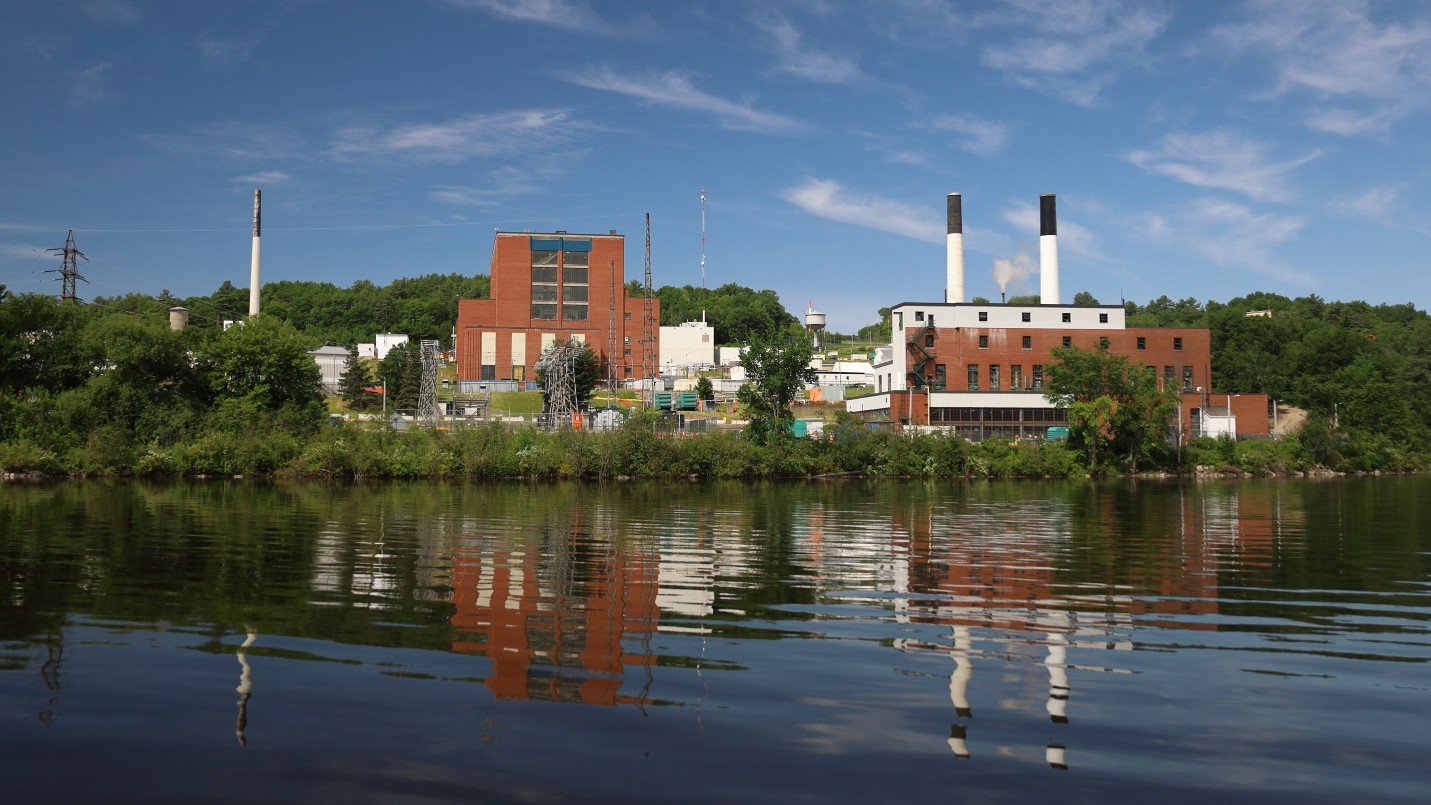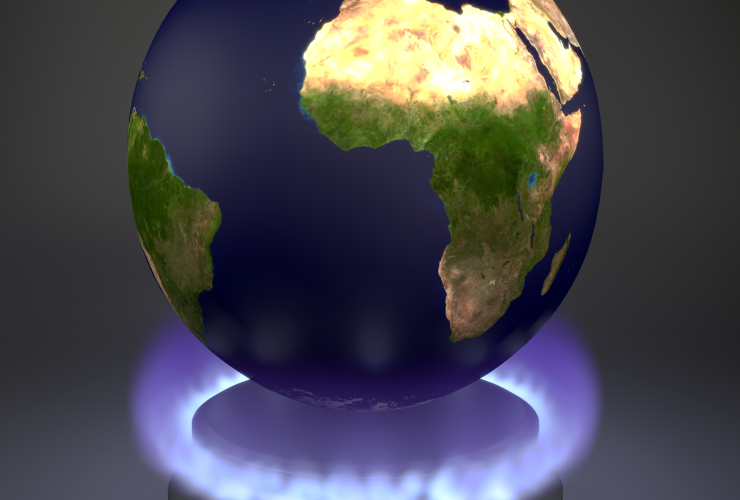The Canadian Nuclear Safety Commission has greenlit a proposed nuclear waste storage facility in Chalk River, Ont., after a years-long battle waged by concerned citizens, environmentalists and First Nations.
On Jan. 9, the commission announced Canadian Nuclear Laboratories’ operating licence will be changed to allow construction of a “near-surface disposal facility” to hold up to a million tonnes of radioactive and hazardous waste. Stored in a large mound, the waste would sit about a kilometre from the Ottawa River, a culturally important river for Algonquins, and this proximity to drinking water for millions is one of many factors that raised alarm bells for opponents.
The proposed facility, referred to as the NSDF, “is not likely to cause significant adverse environmental effects” as long as Canadian Nuclear Laboratories sticks to its proposed mitigation and monitoring measures, the commission said in its decision.
Within hours of the announcement, Kebaowek First Nation put out a press release calling on the federal government to intervene and stop the project. Organizations representing 10 of the 11 Algonquin First Nations have opposed the project, alongside leaders and elders from those nations. Pikwakanagan First Nation, the only Ontario-based Algonquin Nation and closest to Chalk River, signed a long-term relationship agreement with Canadian Nuclear Laboratories on June 9, 2023.
The commission concluded “the design of the NSDF project is robust, supported by a strong safety case, able to meet its required design life, and sufficient to withstand severe weather events, seismic activity, and the effects of climate change.”
Throughout the project review and regulatory hearings, which first began in 2016, the commission said it “gave careful consideration to all submissions and perspectives received” and fulfilled its constitutional responsibility to “consult and, where appropriate, accommodate Indigenous rights.”
Kebaowek First Nation Chief Lance Haymond called the commission's decision “unacceptable” because it goes against the rights of Indigenous Peoples and environmental protection in a press release issued a few hours after the decision.
"I want to be very clear: the Algonquin Peoples did not consent to the construction of this radioactive waste dump on our unceded territory,” Haymond said. “We believe the consultation was inadequate, to say the least, and that our Indigenous rights are threatened by this proposal.”
Algonquin leaders from Kebaowek and Kitigan Zibi Anishinabeg First Nations and Algonquins of Barriere Lake have long opposed the NSDF and have urged the commission to heed their concerns about environmental and human health. At the final licensing hearing in August, Kebaowek and Kitigan Zibi Anishinabeg argued the consultation was inadequate because it began far too late in the decision-making process and did not appear to take their concerns or traditional knowledge seriously.
Ninety per cent of the waste is from Chalk River Laboratories, owned by Canadian Nuclear Laboratories, a private subsidiary of the Crown corporation Atomic Energy of Canada Limited (AECL). Canadian Nuclear Laboratories is owned primarily by AtkinsRéalis, formerly known as SNC-Lavalin. The facility is designed to hold low-level waste — for example, contaminated equipment, such as protective shoe covers, clothing, rags and equipment.

James Walker, a nuclear waste expert and former director of safety engineering and licensing at AECL, disputed the proclamation that all waste will be low-level in a submission to the commission. His calculations, based on the inventory of waste provided by Canadian Nuclear Laboratories, show that much of it is intermediate-level radioactive waste and should not be placed in a near-surface facility. There is also no inventory management system to properly verify the waste complies with the acceptance criteria, he wrote. Walker said the project is “non-compliant with International Safety Standards” for these reasons.
Chalk River is a village roughly 180 kilometres northwest of Ottawa. Chalk River Laboratories used to be a major producer of medical isotopes used for cancer diagnostic procedures and is a major employer in the region.
Last month, concerned citizen Ole Hendrickson initiated a House of Commons petition (authorized by Pontiac, Que. MP Sophie Chatel) calling for an international review of three radioactive waste projects including the NSDF at Chalk River. At the time of writing, it has almost 2,950 signatures. Petitions require a minimum of 500 signatures to be presented in the House of Commons and receive an official response from the government.
— With files from Matteo Cimellaro
Natasha Bulowski / Local Journalism Initiative / Canada’s National Observer
Great article, thanks for the
Great article, thanks for the plug for my e-petition. The final Environmental Impact Statement provides more details about the waste, described here as “contaminated equipment, such as protective shoe covers, clothing, rags and equipment” that would go in the dump. There would also be large amounts of radioactively contaminated soils; concrete, asphalt, brick, lumber, structural steel, piping, etc. from demolition of radioactively contaminated structures; oversized debris of unspecified nature; and “waste packages” such as 20-foot intermodal containers, steel waste boxes (B-25 boxes) and drums (e.g., 50-gallon drums). These “packages” would contain the highest-radioactivity wastes and some would require lead shielding.
Any nuclear waste needs to be
Any nuclear waste needs to be stored and looked after until the radioactivity has died away, which in many cases means practically forever. The waste will probably need to be moved periodically to new containment sites as things decay, in order to prevent radioactive matter spreading into the environment. Is AtkinsRéalis, formerly known as SNC-Lavalin, committed to this? I am skeptical.
The Chalk River Nuclear
The Chalk River Nuclear Facility and Deep River, its former company town are located in close proximity to the banks of the Ottawa River that cuts through the Canadian Shield to Ottawa and then joins the St. Lawrence close to Montreal.
The Ottawa is a deep and powerful river that exists where it does because it lies atop a substantial crustal fault in the Shield. Tremblor activity is infrequent and not, so far, catastrophic. Nevertheless the choice of this site reflects the hasty and perhaps poorly understood potential hazards it presented in the post war panic to take advantage of radioactive technology.
The nearby residents and former employees of AECL have mostly survived multiple accidents at AECL's heavy water reactors. After long delays the Federal Government has implemented a program of compensation to people whose health was adversely affected by radiation contamination during the accidents, or from inadvertent exposure to radiation during their employment at the facility. Many of those victims have succumbed to the radiation damage and any compensation awarded will go to their living survivors.
At best, the safety precautions during the early years of the facility were laughably primitive because scientists still had no extensive knowledge of the insidious nature of radioactive exposure to the human body. It also appears that record keeping about "casual" labour at the facility, was not a high priority and the summer students hired for "scut work" rarely had occasion to come into contact with the "hot" parts of the reactor enclosures - except when there were accidents.
Volunteering to join the "clean up crew" may have earned some kind of premium but these crews were woefully unprepared for the hazards. Each laborer was issued a clean white coverall and a Roentgen badge. Their shift duration was limited and badges monitored for radiation exposure - without any scientifically established baseline for "allowable" exposure. My husband went back to university blithely unaware of the danger but within 10 years of his university graduation he was diagnosed with late stage Non Hodgkins Lymphoma and initially given a prognosis of 3 months to live. In fact owing to the careful balancing act of research oncologists at Princess Margaret Hospital, he survived for 9 years but enduring continual nauseating chemotherapy from the pitifully few drugs available to keep the cancer in check. We still do not know how much contamination he was exposed to since no records seemed to exist, and because he and his Doctors were skeptical about radiation as the source of his disease. Not me. I was convinced from the start that radioactive exposure was the cause and the subsequent history of the AECL workers has only cemented my opinion.
We are not eligible to apply for compensation owing to the vicissitudes of time, the lack of documentation, the the diagnostic failure/ambiguity and the futility of applying under those disadvantages . Like so many other victims of 20th century "progress", My husband's family can never know exactly what killed him.
Given this largely unknown history, one can understand the reluctance of local residents to once again engage with radioactive material however "low grade" it may be. I do not know how many other stories like ours are out there. but one fact is irrefutable; there is no known margin of safety when dealing with a poison that persists for unknown/unproven amounts of time.
Hi Betsy, i am very sorry for
Hi Betsy, i am very sorry for what you have had to endure. The nuclear industry in Canada, as everywhere else, is rife with this type of tragedy. From the mining to the end use, it's just an almost unbearably sad history.
Worst of all, it continues today, this proposed waste facility as an example. "We" of course will do what we can to stop it, but i think you know how it is most likely to go. i wonder if you believe in prayer, i'm not sure i do, but i have been praying a lot the last few years. i pray that God or the Creator or whatever term is used for this spirit will intercede to change our hearts and minds; to allow us to understand our time here is best spent loving and nurturing all of beautiful creation, not advancing our individual selves at the expense of all else. Make me an instrument of love and peace, i pray.
Well, anyhow i guess you get my drift. Till then (if then) we struggle on. In peace and love, mg
Thanks Natasha for the
Thanks Natasha for the article, unfortunately i only got around to reading it today (13 JAN.) and the deadline has passed for signing the petition.
i can only be dismayed once again at the narrow sightedness of our gov'ts and their regulatory agencies. Such an approach, burying our poison, out of sight out of mind, is only an insignificant gesture designed and implemented to allow business as usual. If we stopped producing the poison, we would still need to deal with what already exists, which is a very difficult and contentious issue. How many years has the search for a "solution" been going on? Pardon my simplicity, but shouldn't we stop producing it instead of looking for stop gaps so we can carry on as usual?
One more thing on my mind regarding this: my native friends, as you know "informed consent" in colonial english translates to when we inform you that means you consented. So move aside or we will happily have the the colonial police (RCMP) forcibly remove you. i apologize for this atrocity on behalf of like minded colonial settlers. i ask you to forgive me my transgressions and pledge that my actions going forward will be made in the belief that i live and enjoy life on stolen native land. Land that must be negotiated with the individual Nations with the goal of returning LAND BACK to those it was stolen from. You made this mess Canada, take responsibility for cleaning it up; take action that shows reconciliation is not just a buzzword. )Until then, SHAME ON US!
Anyway, thanks Nat, love. mg






Comments